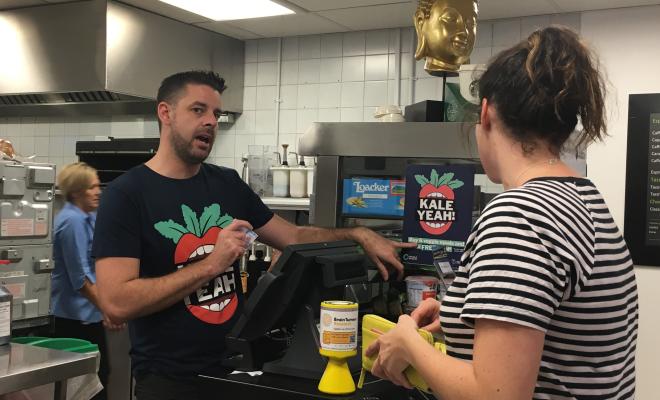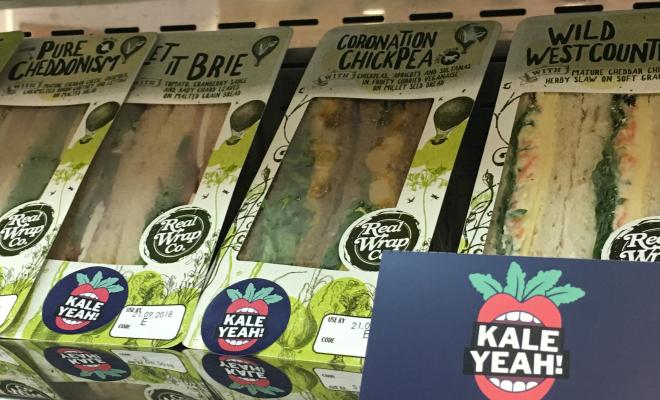13 Dec 2022
When you reduce the meat, fish or dairy content of an individual dish, the change should go unnoticed. But when launching plant-based options, you’ll want them to attract attention. There are several ways you can encourage your customers to choose new and different dishes, some subtle and some overt.
Reward
Rewarding customers for choosing a vegetarian or plant-based option will encourage them to establish healthier and more sustainable habits. A loyalty card is a great way to do this – something that we piloted at Portsmouth University.
It can also bring benefits to your business. By linking a loyalty scheme to the booming interest in plant-based eating, you can build a customer base that’ll choose you over your competitors. Loyal customers are also more likely to spend more per visit – research carried out by the Harvard Business School found that even a 5% increase in customer retention could lead to an increase in profits of 25-95%.
Read our guide to launching a plant-based loyalty scheme.
Guide
Psychology plays a big part in encouraging healthy eating habits. You can guide your customers towards choosing plant-based options by employing choice architecture – presenting options in different ways to encourage different decision making.
- Place plant-based options at the top of the menu to indicate they’re impressive rather than inferior.
- Mix your plant-based options in with all the other dishes so that those options catch everyone’s eye. Separate veggie and vegan menus, or separate sections within menus, are helpful for those who are already veggie or vegan but are likely to be shunned by meat-eaters.
- Remember the adage “eye level equals buy level”. Put healthy, plant-based options where they’ll be seen, instead of tucked away or on the bottom shelf.
- Increase your veggie options. Researchers at the University of Cambridge found that doubling the vegetarian options on menus reduced meaty purchases without denting overall food sales.
- Highlight plant-based options. A second study carried out by the same researchers found that sales of meat-free dishes were boosted by placing them first on the serving counter and leaving around a 1 metre gap between them and the meaty options.
Use language and labelling
How you name and describe dishes will also have an impact on how much they’re chosen.
To tempt the taste buds, use descriptions that mention origin, cooking style and other evocative qualities. For example, “roasted cauli with harissa chickpeas”, “blackened tempeh and avocado tacos” and “spicy Szechuan noodles with peanut sauce”.
Avoid names that are boring or that flag what’s missing, such as "vegetable curry" and "meat-free lasagne". “Creamy coconut and sweet potato curry” and “mushroom and spinach lasagne” sound so much more appealing!
Keep labelling discreet so as not to deter meat-eaters. Signpost veggie and vegan options with a small symbol or lettering, eg "vg" and "ve".
Make plant-based eating easy
Make main courses free of meat as the default and offer portions of meat as a side dish or extra. Provide plant milk for tea and coffee at no extra cost. Enable customers to choose dairy-free cheese on any pizza or baked potato.
A note on meat-free days
In general, people don’t like being dictated to or having their choice taken away, so restricting what’s available could cause a backlash. Making wholesale changes across your menus to reduce meat, fish and dairy is less obvious but just as effective. Our rebalanced menu guide illustrates how you can reduce the overall amount of meat you’re serving – by beyond 50% – but still keep it on the menu every day.
However, if you're interested in setting up a meat-free day, or if students bring this proposal to you, make sure you engage the wider student and staff body in the discussion and seek their input from the start. If you present them with an opportunity to air their views and make a democratic decision, there's a better chance of the proposal being received with success. Work with the Student Union or other relevant clubs and societies.
Some universities have introduced bans on beef, with mixed success. This isn’t an approach we support. Read our FAQ on banning beef and the beef ban statement from SOS-UK.






